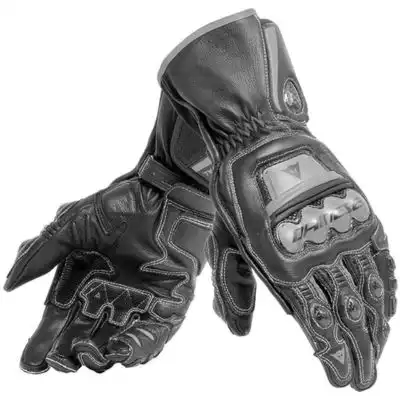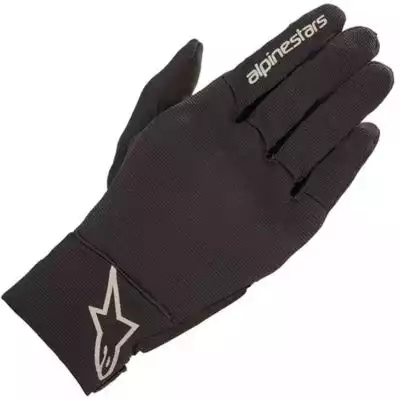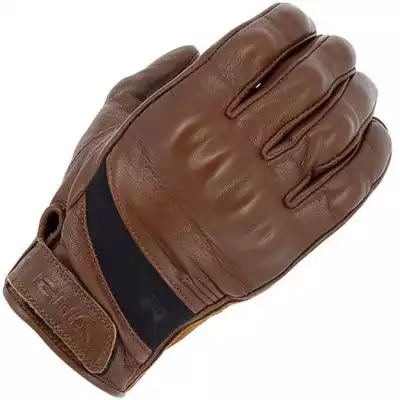Motorcycle gloves are an essential part of your riding gear, but choosing the right pair of gloves isn’t always the easiest task.
You can get short gloves, long gloves, sports gloves, cruiser gloves, waterproof, and even heated gloves…the options seem limitless at first glance.
That’s why we’ve put together a comprehensive motorcycle glove guide — so you are armed with all you need to know before buying your first or next pair of gloves.
Save Money On Your Motorcycle Insurance
- You could pay less than £195*
- Compare quotes from 25+ UK providers
- Fill in one form to compare top bike insurers
Why Buy Motorcycle Gloves
Motorcycle gloves serve two purposes: First, they protect your hands, and second, they can improve your comfort whilst you ride. A good pair of motorcycle gloves will provide your hands with some impact protection in an accident and should also protect your hands from abrasion in a slide.
When riding gloves protect your hands from the elements, whether the cold, sun, or rain, they also protect you from debris that gets kicked up off the road occasionally. On top of that, gloves can give you extra grip on the controls and prevent rubber grips from rubbing the palm of your hand, causing blisters and discomfort.
You might think a pair of work gloves or winter gloves can do the same job, and sure, they might protect your hands from the elements. However, they won’t hold up in an accident because they simply aren’t built to protect your hands the same way motorcycle gloves are.
You should consider motorcycle gloves as important as any other piece of riding gear, including your helmet, jacket, or boots.
Protection
Motorcycle gloves protect your hands with tough durable materials that provide adequate abrasion resistance packed with armour for good impact protection. These are the two things you should be looking for in a good pair of riding gloves. A few factors contribute to quality abrasion resistance and impact protection.
Material and Construction
The biggest debate in motorcycle clothing is leather vs textile, applying equally to trousers, jackets, and, yes, even gloves.
Leather
Leather remains the preferred option for sports/track gloves thanks to its legacy of durability and its superior protection.
Pros:
- Suitable for track use
- Classic timeless designs
- Durable
Cons:
- Usually not waterproof
- Warm in the summer
- Shrinks in certain weather
Textile
Modern, man-made textile materials have proven themselves to be just as good and protective as leather.
Pros:
- Can be waterproof
- Mesh panels can be used for summer
- Thermal liners for winter
- Just as protective as leather for abrasion
Cons:
- Not always the most stylish
- The more technical the glove, the more expensive
Whether you choose leather or textile motorcycle gloves, you just want to make sure they are fit for purpose and built with protection in mind. Look for reinforced areas on the palm, back of the hand, and fingers, and double/triple stitching for added strength.
Armour
When it comes to armour, there is only so much gloves can accommodate, but at the bare minimum, there should be some knuckle protection.
Weise Street Fight Gloves are a short summer glove with TPU (thermoplastic polyurethane) knuckle protection, which is a good example of the minimum level of protection you should be looking for.
For extra protection, look for armour along the fingers, memory foam on the palm of the hand, and hard protection at the wrist, as well as external slide protection on the palm and fingers.
The Dainese Full Metal 6 gloves feature carbon-fibre inserts at the finger joints, along with mixed-composite carbon and titanium inserts at the knuckles and backs of the hands. There are also some thermoplastic inserts on the side of the little finger and palm.
This kind of protection is perfect for high-speed riding and track days, and it’s just the kind of thing you should be looking for in a sports glove.
You will see plenty of different materials for armour used in motorcycle gloves, such as gel pads, TPU, memory-foam, and even carbon-fibre inserts.
Hard knuckle protection, regardless of the material, should be what you aim for, but memory foam and gel pads will serve their purpose on the palm of the hand and fingers.
Your riding style should determine how much protection you need.
If you’re a sportbike rider, you need the most protection possible, whereas if you are just cruising around on a V-twin in the summer, you can likely get away with the bare essentials.
However, you should always go for protection over and above style and aesthetics. Just be sure to make a balanced decision about how much protection you need.
CE Ratings
To be sold as protective equipment, motorcycle gloves in the UK must meet EN 13594:2015 standards. These standards ensure motorcycle riding gear is tested to at least a minimum standard.
Gloves are rated to either CE Level 1 or CE Level 2, with 1 being a basic pass and 2 being a superior pass. Knuckle armour is also rated, and will be indicated by ‘KP’ (knuckle protection) on the label if it has been tested and approved.
CE Level 2 gloves will always state 2 KP because to reach the highest standard of protection, the gloves need to be equipped with adequate knuckle protection. CE Level 1 gloves can be rated with or without knuckle armour and will be indicated by 1 KP if the armour has also been rated.
The CE rating on a pair of gloves is a quick and easy way to check how protective they are and decide whether they suit your needs.
Sizing Motorcycle Gloves for the Right Fit
So, we know that motorcycle gloves are important and how they protect you. The next step is figuring out how to find the right fit.
We’ve written a whole post about how to get the perfect fit, which explains everything you need to know about measuring your hands and how gloves are meant to fit, so we won’t repeat everything here.
Manufacturers will each have their own sizing guide and this will be based on either palm width or palm circumference.
The sizing guide gives you a great start point to compare your measurements against and begin trying on gloves.
Gloves need to feel snug all-round your hands and fingers. There should be no pinching, binding, or bunching up anywhere. Your fingers should fill out the gloves and reach right to the tips, without any loose material.
If gloves are too loose, they could come off in an accident and fail to protect your hands. Loose material at the end of the finger can make the bike’s controls more difficult to manage, and this can be problematic and dangerous.
If gloves are too tight, on the other hand, they can be uncomfortable and cause your hands to swell as they warm up, leading to you feeling fatigued fairly quickly.
Test Them Out
The best way to know if gloves fit you well is by trying them out on your handlebars. If you have ordered online, just sit on your bike and test your controls without going anywhere. If not, some shops have grips you can try the gloves out on.
By feeling them out like this, you will soon know if the gloves are too tight or too loose.
Leather
If you are looking at leather gloves, you need to be cautious of a couple of things.
- Leather needs to be broken in and usually isn’t comfortable from day one. You will need a breaking-in period to get them comfortable. Don’t be tempted to size up if they are snug or you’ll end up with gloves that are too big.
- Leather can shrink. If you regularly ride in the hot sun, the sun warms your hands and causes you to sweat, the moisture dries up the leather, and the gloves shrink. This should only happen in really hot weather, but it’s worth being aware of.
British vs European Manufacturers
There are some major differences in the way manufacturers produce gloves depending on where they’re based.
British (and US) manufacturers tend to produce gloves that are wider in the palm and have thicker fingers, whereas European brands tend to have smaller palms and thinner, longer fingers.
There are exceptions to this rule of course, but it certainly helps narrow down your choices by manufacturer and your hand size/shape.
Types and Styles of Motorcycle Gloves
There are three main types of motorcycle gloves:
- Fingerless gloves: These are mostly popular for summer riders, cruiser riders, and those who would prefer to wear no gloves at all but want at least some protection on the palms of their hands and knuckles.
They’re better than nothing, but if you’re like me — who plays guitar and likes to make stuff — then you value your hands. Fingerless gloves just aren’t for me.
- Short-cuff gloves: These are available in all sorts of styles, from summer, touring, dirt, and even winter gloves.
They come in leather and textile variations, and they can be fully perforated, simple leather gloves or lined with a waterproof and thermal membrane in a textile format.
- Gauntlet gloves: Like short-cuff gloves, these also come in a range of styles, but they’re longer, coming further up the arm to cover the wrist. Winter and touring gloves are often gauntlet-style, along with some sports gloves.
Deciding whether you want a short or long glove is the first step. After that, you will want to look at the style of glove you want.
Summer Gloves
Summer gloves are usually a short-style glove with vents either in the armour or in the material of the fingers. They can come in leather or textile, and some even have mesh panels to allow maximum airflow.
Read more: Best Summer Gloves
The ventilation channels are often built into the protective armour so you don’t have to compromise safety for airflow. Summer gloves can still provide a good level of protection.
Winter Gloves
Winter gloves are usually constructed from textile with a thick thermal liner. They tend to be quite bulky and are usually a longer glove. They can also be equipped with a waterproof liner to help keep you dry during the wet colder months.
Read more: Best Winter Gloves
Relatively new to the market are heated gloves. These are a perfect cold weather solution that prioritises warmth, a more extreme version of the best winter gloves.
Sport/Track Gloves
Sports gloves are usually leather gloves and come loaded with protective armour. Leather sports gloves are the only type of gloves allowed on the track.
They can come in a short- or long-style gauntlet glove, with the long option providing the most protection.
Read more: Best Leather Gloves
Adventure/Touring Gloves
Adventure/touring gloves are usually textile. They can be short or long but usually long and armed with adequate protection. They often look similar to winter gloves.
They can also be waterproof, since adventure riders are likely to get caught in the rain at some point — especially in the UK. They will also have additional features like touch-screen compatible fingertips and a visor wiper on the thumb, both features that make it easier to ride long distances.
Dirt Bike Gloves
Dirt bike gloves tend to offer very little protection. They are super lightweight and thin textile, built to offer supreme control over the bike, which is needed when riding off-road.
However, they offer very little protection for street-riding. They are not good for abrasion and usually have no impact protection. While they might look cool, they aren’t suited for street bikes.
Street/Cruiser Gloves
Street gloves are stylised and can sometimes take after dirt bike gloves but are made of textiles, like Cordura, and fitted with some protective armour. The Alpinestars Reef gloves are a good example of this kind of glove.
You can also get short leather gloves that have a classic style, such as Richa Custom Leather Gloves. These look like traditional driving gloves and will suit cafe racer or cruiser riders but still offer a minimum level of protection.
To narrow down your choices, ask yourself some of the following questions:
- What type of riding do I do? Do I ride spiritedly or cruise along?
- Do I commute on my bike? Or take on long distance tours?
- What weather do I ride in?
- Do I ride mostly on- or off-road?
- What is my budget?
The answers to these questions will help you determine the style of glove you need. It might be that you need more than one pair, for example, if you ride both on- and off-road on different bikes.
Budget
Motorcycle gloves can cost anywhere from £20 to £300. Prices vary so much for a multitude of reasons, including brand name, materials, level of protection, and any extra features.
Being able to buy all types of riding gloves at different price ranges is a big bonus if you’re like me. I have several pairs of gloves, some more expensive than others, but they each meet a different need. I have my thick winter gloves that were quite cheap but keep me warm, then I have track gloves and an everyday street pair.
No matter which style of glove you’re looking for, there is a pair on the market to meet every budget.




